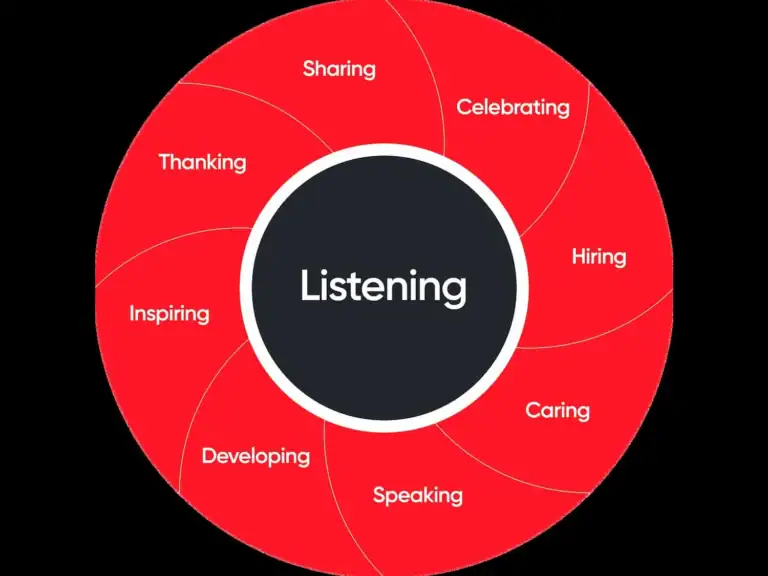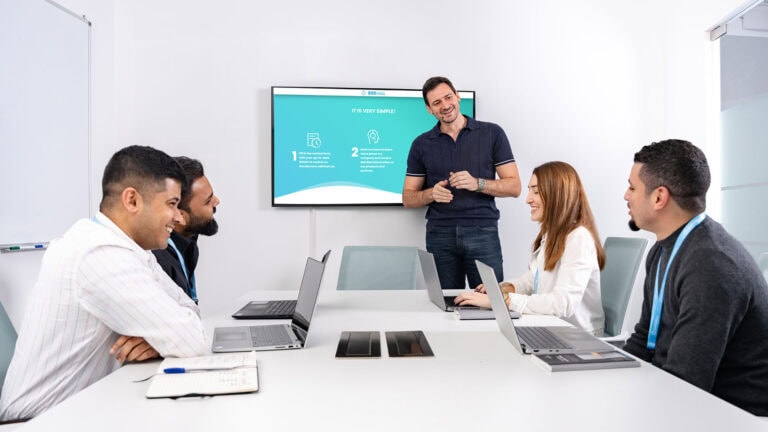
The Right Way To Survey Employees During A Crisis

Claire Hastwell

Julie Musilek
As the COVID-19 pandemic continues into May, many employees are entering up to their third month working remotely under quarantine.
Some of your employees may be adapting to the change well, creating a healthy work-life balance, while others may be feeling pressure to be productive or living and working in fear of being laid off.
As a responsible and caring manager, you understand why it’s important to survey employees during this crisis:
- It sends a message that you are here and you are listening
- It’s an act of compassion that builds employee trust
- It’s an essential source of business intelligence for navigating new unknowns
Surveying right now is not only wise, it’s crucial to help your business thrive through the current recession…… if you do it right, that is.
If you want to get the fullest possible picture of your employee experience, your survey’s design, execution, and details matter.
Over the past 30 years, Great Place to Work® has helped countless companies design, deliver and execute their employee surveys, including during times of crisis such as the Great Recession.
In the process, we’ve identified several best practices for surveying during a crisis:

Before you send the employee survey
Reassure confidentiality
A common fear among employees is that their employer will be able to connect their responses to them. They worry that their requests will seem ungrateful or harsh at a time when some are without jobs.
When you make clear that all responses are confidential, you create the psychological safety that encourages people to share their feedback openly and honestly, in a way they might not feel comfortable doing face to face.
Give context
Sensitive questions, such as those that ask about homelife, call for thoughtful explanation. In your pre-survey communications, give employees context.
Explain your endgame
No employee wants to take the time to share their feedback and criticism, only to find that the company merely files it away and never acts on it. Sending an employee survey and failing to act on it can be worse than not surveying at all.
It’s essential that you let your people know what you will do with their feedback. This ensures they will feel heard, cared for, and willing to share with you again, contributing to the high-trust company culture you are working to create.
Meet employees where they are
The survey you send during a crisis likely won’t look are those that you’ve sent during “normal” times. It’s important to design it in a way that takes into consideration what employees may be experiencing at the time.
For example, an organization that has had to furlough employees may tailor a survey to recognize “survivors’ guilt” among their colleagues who remain.
Employees on the frontlines, like health care workers, will need acknowledgment that they are likely overwhelmed and may not have the capacity to respond to a survey:
- Keep the survey brief
- Recognize potential limitations in your communications
- Offer alternative avenues for them to provide feedback (such as their supervisor or HR)
These demonstrate flexibility and sensitivity to their situation.
Want to get recognized for your great culture?
Find out how you can power your people analytics function and show the world you’re a great workplace with our Great Place to Work-Certification™ process.
What employee survey questions should you ask during a crisis?
To decide what to ask, it can help to work with the end in mind.
A useful way to do this is to ask yourself what would be the most helpful things for your organization to learn so you’re well-placed to support your employees better in the current climate.
Once you’ve determined that, let these best practices inform your questions:
Ask up to three open-ended questions
It’s important to give employees a forum to share their thoughts in a way that paints a vivid picture of their experience.
However, it’s rarely a good idea to ask people to write too much. Writing open-ended answers requires additional cognitive load that employees may not have available — especially in times of crisis where employees are processing extraordinary anxiety.
Incorporate quantitative statements
The idea here is to look for signs of improvement (or decline). When you incorporate quantitative statements, you can revisit them in 2-3 months and see how things have shifted over time.
Use a mix of crisis-related and “business as usual” statements
We use a mix of our Trust Index™ survey statements – these are statements that almost 30 years of research tells us are key drivers of great company culture – with statements that you can design specific to the current climate.
Examples of two situation-specific statements and one recurring one from our Trust Index survey:
- I am supported to care for my responsibilities at home (situation-specific)
- I feel financially secure for the next several months (situation-specific)
- Management involves people in decisions that affect their jobs or work environment (recurring Trust Index survey question)
Include questions about management
In times of crisis, leaders need additional support to balance the needs of their people, their organization, and their own personal experience.
Some statements we recommend to measure and help leadership under crisis:
- Management involves people in decisions that affect their jobs or work environment
- Management keeps me informed about important issues and changes
- I feel safe speaking up
- Management shows a sincere interest in me as a person, not just as an employee
Example survey questions from Best Workplaces™
Here are some sample questions that Great Place to Work clients have used in recent pulse surveys to generate clear and actionable feedback:
- What is one way we could continue to support you?
- What is your biggest concern right now – at home or at work?
- Is there anything the organization can do in light of these circumstances that would be helpful to you?
- What communication/updates would be valuable to you during this time?
- What suggestions do you have that the organization should consider to restart our business when the timing allows?
Not only do your employees know best what they need, but they will also have many of the ideas that are going to enable you to move beyond the current crisis. Questions like the ones above can generate answers that help you create an action plan to address employee concerns and improve your response to COVID-19.
Follow up, follow through
After you close the survey and analyze results, you must communicate results, sharing what you learned from the survey and what actions you are taking in response to employees’ feedback.
This is vital because it:
- Demonstrates listening and commitment to your employees’ well-being
- Preserves and builds trust and credibility with your people
Designing an employee survey that addresses employees’ experience and needs during the pandemic will help you put your time, energy, and resources in the right places.

What Makes Napco a Great Place To Work®? It Starts with Family Spirit and Ends with Impact
What Makes Napco a Great Place To Work®? It Starts with Family Spirit and Ends with Impact About Napco National Napco National has been part of the Saudi industrial landscape since 1956,

9 High-Trust Leadership Behaviors That Build Great Workplaces
Caring, Celebrating, Developing, Employee Experience, Hiring, High-trust leadership, Inspiring, Leadership & Management, Listening, Managerial Communication, Sharing, Speaking, Thanking Every employee should take these behaviors to heart whether or not they are people leaders. I often get asked

The Evolution of Workplace Culture: Why It Matters More Than Ever in 2025
One universal workplace experience is the emotional imprint left by an organization—its energy, trust, and sense of belonging. Although experts may agree on what constitutes

How Purunity Embeds Goodness into Work and Culture
People go where there is pride in the work they do. At Purunity, this sense of pride stems from our core mission: driving innovative and

Powerful Strategies to Cultivate DEI in Omani Workplaces
DEI is not only a buzzword! Developing a diverse, equitable, and inclusive work environment shows that leaders care about their employees, appreciate, and respect their

4 Strategies to Promote Resilience in UAE Workplaces
Cultivating resilience in the workplace is the key to empowering employees and boosting their confidence. It is important for both employees and their leaders. Resilience
Get Insights In Your Inbox
Access the latest news, research, and best practices to inspire your great workplace journey.
